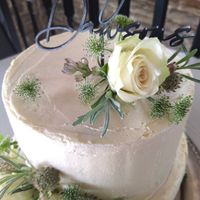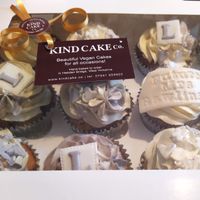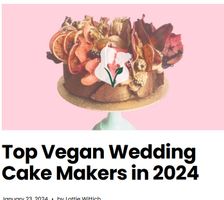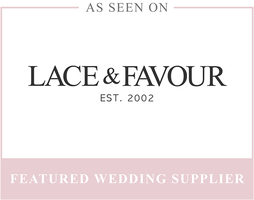Blog
More about cake, vegan cake, flowers, chocolate, tiramisu, weddings, coffee... lots of yummy things.
Fairly-traded and locally-grown
Fair to all is what we want!
You might ask: Where do the ingredients for your vegan cakes come from? Who grew them? Did they get fairly paid for their labours?
I'm delighted to be reporting that all of the chocolate and cocoa I buy for my vegan cakes is now organic and fairly-traded. I buy cocoa which is sold by Suma Co-op, who are the UK's largest workers' cooperative, where everyone is paid the same, and everyone has an equal say in all company decisions. Suma Co-op is based in Elland in West Yorkshire, just a few miles from Mytholmroyd, Hebden Bridge where the Kind Cake Co is located. Suma have very clear ethical policies with respect to sourcing, slavery, fair wages, fair prices from suppliers, as well as environmental considerations. So I trust them to source the highest quality and most fairly-procured commodities, and am proud to have been their customer for over a decade, personally and professionally. All the cocoa for my vegan Chocolate cakes, Chocolate-Orange cakes, and vegan Black-forrest Gateau, is from small cooperative farmers who are paid fairly for their cocoa so that they can take care of their families and their land and build security in their communities. The fantastic chocolate I use for my chocolate buttercream is from Equal Exchange, a brilliant brand who source from small farmer coops. Check out their website here: https://www.equalexchange.co.uk
Another commodity which is of concern, from an ethical and environmental point of view, is soya products. Soya milk is a key component of my egg-free cakes, because it's a great replacement for eggs in vegan cake recipes. Soya milk is made from.... soya beans! Soya beans are grown all over the world. Sometimes they're grown on land cleared specially for the purpose, land which was previously forrest, and sometimes rainforrest.
Once again, great news - I now buy only soya milk made using organically-farmed European soya beans; French soya beans, to be precise. The brand of soya milk I use in my vegan cakes is Sojade, which I buy from.... Suma! So, no slash-and-burn rainforrest clearing has taken place in the making of your Kind Cake Co cake! Happy indulging!

"Can you make me a gluten-free vegan cake?"
16th May 2024
"Can you make gluten-free vegan cakes?" That's a question customers ask me quite regularly. The answer is YES! It's very possible, if not simple, to make vegan cakes that are also gluten-free - or gluten-free cakes that are also vegan!
W h a t i s g l u t e n f r e e ?
Gluten is a protein found in some grains - most notably, in wheat, but also in other grains, such as durum wheat (used to make pasta), spelt (an ancient form of wheat), barley and rye, plus some kinds of oats. Most of the protein in wheat is gluten. The issue with gluten is that some people have an allergy or intolerance to it, particularly people with some forms of gut sensitivity like Coeliac disease where the gut become extremely sensitive to gluten and causes illness if eaten.
To avoid gluten, we need to find alternatives to wheat in recipes which normally require it (importantly, bread and pasta but also beers, sauces, puddings and, of course, cakes).
H o w d o y o u m a k e c a k e s g l
u t e n f r e e ?
It's easy to make gluten-free cakes - now that we have some wonderful gluten-free baking flours available in the shops! I use Doves Farm Freee Self-Raising flour. It's made from several different carbohydrates and grains which don't contain any gluten - rice, potato, tapioca, maize and buckwheat flours. You can simply substitute your wheat flour for the gluten-free alternative, and you get great cakes. This works well with vegan cake recipes. Plus, there is an added bonus...
L o w s u g a r ? !
Yes, it's possible to substantially reduce the amount of sugar in a gluten-free cake with out affecting the texture. Wheat cakes require a certain proportion of sugar or else they become heavier or a little claggy in texture and taste. The great news is that you can reduce the sugar you'd normally add by upto a third for your gluten-free cake and the texture will still be good.
O n t h e s u b j e c t o f t e x t u r e
Over the decades, gluten-free goods have really evolved - as have vegan ones! Years ago, there were almost no gluten-free breads or cakes that resembled anything like their wheat counterparts. Now, there are numerous artisan chefs and bakers who can create breads and cakes where it's hard to tell the difference. No more cardboard loaves.
The reason that gluten-free products tend to have a different texture from 'normal' versions made with wheat is because the gluten forms a structural matrix of gluten molecules which hold shape and trap air when baked.
Without the gluten matrix to give them stability, gluten-free cakes often have a less resilient texture. I add a tiny smidge of xanthan gum (it comes in powdered form), and this helps to hold together the crumb of the gluten-free sponge, which otherwise is very soft in texture.
Speaking of crumb texture, here's a top tip: soya milk really helps give vegan cakes of all kinds, including gluten-free, a better crumb! If you don't have a soya allergy, soya milk is an invaluable ingredient - thank you to the humble bean!
F A Q s
Does it contain soya? Yes. Soya milk really helps create a better texture so my gluten-free cakes are made with soya milk as opposed to any other plant milk.
What about baking powder? Another good question. Baking powder can be gluten-free, as long as it's not based on a wheat carrier for the raising agent chemicals. Just check that your brand is gluten free. It must not have wheat listed in the ingredients. Freee and Dr Oetker are two big brands of baking powder that are gluten free. If you can't find one, you can use the traditional method of bicarbonate of soda and cream of tartar. If you go for self-raising (gluten-free) flour to make your vegan gluten-free cake, you may not need any separate baking powder at all.
How long do they keep? Gluten-free cakes keep a little less well than ones made with wheat, but will still be good for two or three days from baking. You can also freeze them well. Just defrost them for 2-4 hours, like you would any cake, and they come out good as new.
Can you make gluten-free vegan wedding cakes? Yes! You can have a fully-tiered wedding cake made from gluten-free sponge. Or, if you prefer, you can have a one or two of the tiers gluten-free, and the other tiers with 'ordinary' cake. There is complete separation of the tiers because they are each mounted on a cake card for stacking and covered with buttercream, so there is no contamination between tiers.
Do any cake flavours work best as gluten-free? Good question. It is perfectly possible to bake a delicious vegan gluten-free vanilla sponge, for example for filling with jam and buttercream to make a Victoria Sandwich cake. However, the texture created by adding cocoa powder is wonderful if you like chocolate cake, so Chocolate is a good choice. Similarly, Carrot & Walnut, or Almond & Cherry, with their extra ingredients, work well as gluten-free vegan cakes, and so do Pistachio Praline, Coffee & Walnut and Lemon! In fact, there's no limit, as long as your flavouring doesn't contain gluten - hence, Biscoff cake can't be done gluten-free (Biscoff biscuits are made with wheat...)
How do you do gluten-free in a kitchen where you use wheat flour?
HELEN'S TOP TIPS FOR GLUTEN-FREE BAKING:
* Store wheat flour separately from other ingredients (such as sugars, flavours, gluten-free flour).
* Bake gluten-containing recipes separately from gluten-free ones, in a separate baking session, to avoid flour contamination.
* Clean down all surfaces and wash up all utensils and machinery before starting a gluten-free baking session.
* Make sure to use fresh cloths and towels.
* Double-wash and re-rinse baking tins and utensils just prior to using to bake gluten-free.
In short, separation and organisation in the kitchen are key to gluten-freedom.
If you'd like to enquire about a gluten-free cake or wedding cake, please just get in touch and I'll be happy to answer any questions you may have.
Happy baking!

Vegan vs 'normal' cakes
7th March 2024
What's the difference between a vegan cake and a non-vegan cake? It's a great question.
Traditional cakes
Traditionally, cakes were made from flour, sugar, butter and eggs. Many of us may have baked with our mums and grans, or our dads and grandads, when we were little, and used the 'creaming method'. This, as those who didn't have an electric mixer will recall, involved 'creaming' together equal weights of butter and sugar in a mixing bowl until the mixture had gone from a buttery yellow to a much paler colour, with a fluffy texture. Without a mixer, it took ages! The aim was to soften the butter, and beat air into the butter and sugar mixture.
Once you had done this, it was time to add the eggs. Now, you would add one egg at a time, and two teaspoons of your flour, and beat it into the butter and sugar. This took some elbow grease, too, and the aim was to beat air into the mixture, with the egg mixing in and allowing the batter to trap very fine air bubbles. Once the mixure was smooth again, you would repeat the process with the next egg, and the next.
Then, final stage, you would 'fold' in the flour and baking powder to the egg, butter and sugar mixture. This was done carefully, with a metal spoon, and you were supposed to do it gently by folding the mixture over itself in the bowl in circular motions, or a figure of eight. I wasn't very patient, and I often hurried, but it didn't really seem to matter (though maybe if I'd had more patience my cakes would have been lighter).
Then you'd pour your lovely smooth cake mixture into tins and bake it in a preheated oven until you could gently press the top of the sponge and it would rebound, or a knife stuck into it came out clean. This part doesn't change for vegan cakes!
Vegan cakes
How does making a vegan cake differ from making a tradtiional cake by the creaming method? For one thing, it's simpler. And for another, it is much easier, there is far less elbow grease involved, no beating and no creaming!
There are a few ways to make a vegan cake, and the very first question anyone asks is almost always, "What do you use in vegan cakes instead of eggs?" Eggs, it turns out, are not in any way necessary to make a light, moist sponge cake! Do you need something to replace the eggs? No, you don't. You don't need an egg-replacer, as such. I think the reason for this is that you don't use the creaming method for vegan cakes. You don't need to start by combining the sugar and butter, and then beat in an egg alternative. The method for baking vegan cakes is completely different.
Usually, vegan cakes are made using the simple method of putting all the "wet ingredients" into one bowl, and all the "dry ingredients" into another. Then, at the last minute, you pour the wet into the dry, mix it all up into a smooth batter, and pour it into your cake tins, to go straight in the oven. This is a wondefully straightforward way to make a cake. It gives you plenty of time, because all the magic happens once you have mixed up the wet and dry ingredients. It involves no hard physical work (beating away with a wooden spoon) and you don't need a mixer. You can just use a spoon or a whisk until you get a smooth mixture, and your work is done!
Why combine wet and dry at the last minute? Another good question! The reason is that, with vegan cakes, the raising of the sponge texture is created by a chemical reaction, and not by a combination of mechanical and chemical actions. In vegan cakes, the reaction between the acid and alkaline ingredients which creates gas bubbles in the mixture (carbon dioxide) is initiated when water is added by the wet ingredients. This can be either through one of the wet ingredients containing acid directly (such as vinegar or lemon juice); or it can be because the acid present in the baking powder only begins to react with the alkali in the baking powder in the presence of liquid.
Baking powder is normally made of sodium bicarbonate (alkali) plus an acidic salt such as calcium phosphate or tartaric acid (cream of tartar) in a carrier powder such as cornstarch or sometimes wheat flour.
Either way, once liquid is added, the chemical reactions start, gas is generated in the mixture, and this is what will cause your cake to rise beautifully. You can see the bubbles forming if you watch for a minute or two after you've mixed everything together. The bubbles will rise to the top of your mixture. If you've aleady poured your mixture into your tins, now is the time to get them in the oven. If not, get pouring and get them in quickly! As your cakes begin to cook, the air bubbles will remain captured in the sponge matrix as it solidifies, and your cake will have a lovely spongey texture.
Is the structure of a vegan cake different?
There is a little bit of difference in the texture of vegan cakes versus non-vegan cakes made with eggs and butter. Vegan cakes are just a little softer in texture. This is not noticable in ordinary eating situations! Really, the only difference it makes is when you are stacking a cake, for example for a vegan wedding cake. Vegan sponge is a little less 'structural' so it just means it's slightly less resilient for building tall structures or intricate cake shapes. This is more of a techinical consideration for cake bakers, rather than anything worry about for just enjoying your cake.
A consideration with regard to the texture of vegan cakes is which non-dairy milk you use in making your cake. Soya milk gives the best texture and structure of your sponge. Oat, hemp and coconut milks give less structural stability, perhaps because they are lower in protein than the soya beans used for soya milk. This means that, again, when using your cake to stack or building a shaped cake, a soya-free sponge will be more tricky to work with and won't cut so neatly as cake baked with soya milk.
What about vegan buttercream?
A great question. Vegan buttercream is very similar to non-vegan, now that there are some superb vegan butters on the market. Vegan buttercream compared with dairy-butter buttercream is slightly softer in texture, and it's a little more difficult to achieve a really fine and perfect finish with vegan buttercream.

How to choose your wedding cake
15th February 2024
Wow, congratulations, you're getting hitched! No doubt you're starting to plan with a vengeance. One of the central rituals of a wedding celebration is the wedding cake, and it's an opportunity to have the cake of your dreams.
For me, a wedding cake is the one occasion when the appearance of the cake is just as important as the taste. Normally, in my cake-eating career, I prioritise tastiness and freshness over anything else. Gotta be worth the calories, right?! Wedding cakes, though, form part of the ceremony and majesty of uniting two individuals into one for life. Wedding cakes should be up to the job, a real centrepiece. Everyone sees the wedding cake and it's exciting to look forward to the cutting and then the eating. Even if they're already full of wedding breakfast your guests can take their piece home for later.
A cake for everyone!
One of the best things about choosing to have a vegan wedding cake, is that everyone can have a piece. In past years, as a cake maker, I found that many couples chose a wedding cake made traditionally with eggs and butter, and supplemented it with a smaller vegan cake for their vegan friends. Now, as the vegan market has expanded and guests are no longer scared by vegan cakes(!) it's much more common to go for a vegan wedding cake and everyone can partake. I think that's a brilliant development, it makes life easier for couples who now only have one wedding cake to consider, and everyone is happy.
If you want to see some of our beautiful vegan wedding cakes, please have a look at our wedding cakes page.
Top tips for choosing your perfect vegan wedding cake
Here are my tips for making your decision on a cake you'll love to look at and love to eat:
Choose your colour scheme. Likely you already know how you envision your wedding day. What are the colours you see? Will your wedding cake tie with them, or stand out in a contrasting palette?
Choose your style - rustic, semi-naked? Or an opaque and stylish buttercream covering? Do you want a gothic, brooding style, or a fresh style for spring and summer? Consider the season of your big day, you ideas can be inspired by it. You will also want to think about how many tiers you'd love your wedding cake to have!
Fresh or formal? Do you want flowers on your wedding cake? Or a simpler, pared down look?
Flavours. What cakes do you love to eat? Make sure you get to eat your favourite cake on your wedding day!
How much cake? For me, there's no such thing as too much cake, however, after a three-course wedding breakfast, your guests won't necessarily have lots of room. At weddings, traditionally the portion size is a "coffee portion". There's also the option of a "dessert portion" in place of, well, dessert, at the wedding meal. We are always happy to give you guidance and the benefit of our experience in choosing the size of your wedding cake.
Choosing your wedding cake flavour (or flavours)
Part of the enjoyment of planning your wedding cake is choosing the flavours. If you're having a wedding cake with two or more tiers, you can have a different flavour for each tier! What a bonus! Our vegan wedding cakes are available in a range of classic favourite flavours, including one or two of my own favourites; I'm a nut-fiend, so Hazelnut Praline and Pistachio Praline are up there for me, along with Almond & Cherry. The flavours we offer are:
Vanilla | Victoria (select strawberry or raspberry jam) | Chocolate | Chocolate Orange | Lemon | Toffee Crunch | Pistachio Praline | Hazelnut Praline | Almond & Cherry | Carrot & Walnut | Coffee & Walnut | Battenberg
We offer wedding cake samples in a tasting box sent to your home or workplace by post. You choose your favourite four from our flavours, and we bake them freshly for you in mini-sized cakes, and ship them the same day using a tracked next-day delivery service. You can have your own personal tasting session, with other members of your wedding crew, or just the two of you, in the comfort of your own home, and let us know what you thought. Don't forget to decide which cake you want most of, as this will form the bottom tier of your wedding cake (the biggest tier).
To gluten-free, or not to gluten-free?
Do you need some of your cake to be gluten free? You can choose to have one (or more, or all) of your vegan wedding cake's tiers made gluten free. In a multi-tiered cake, each tier is separated by a cake board, so there is no cross-contamination between cakes made with wheat flour and gluten-free cakes without. Alternatively, you can choose to have some gluten-free vegan cupcakes made and decorated to match the main cake.
Wishing you happy deliberations in all aspects your wedding planning! Helen x

Top Vegan Wedding Cake Makers!
10th February 2024
Well! What a gorgeous surprise one morning in the depths of winter to receive a message from Go Hen Hen Party Planners in Bath (https://www.gohen.com, Instagram @gohen_com). They included us in their list of top vegan wedding cake makers in the UK. You can see their blog post here with information in all their makers across the UK, but we'll take the opportunity to quote their lovely words about our cakes:
" We actually can't get over how gorgeous these floral creations are." Thanks! Wish you weren't so far away from sunny Yorkshire, we'd pop in and say hello. Any of your hens need a vegan wedding cake - well, they know where to look thanks to you!

